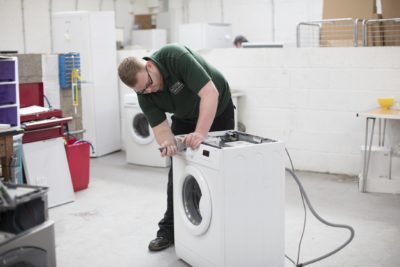OPINION: Take. Make. Dispose. These three words describe how UK waste electrical and electronic equipment (WEEE) legislation frames consumer electronics, and all other electrical products for that matter. This year’s theme for International E-Waste Day is ‘recycle it all, no matter how small’. Such a slogan demonstrates the magnitude of work still required globally just to pull recyclable material out of incineration, or worse, landfill, waste disposal practices.
In the recent past, much has been made over the compliance fee for WEEE, which is seemingly an admission that, in governance terms, nudging up targets does little to promote greater recycling levels. A sea-change in the regulatory environment is required if more material is to find its way around the loop. Government’s penchant for setting and meeting recycling targets, in this instance, seems to be declining with more nuanced dynamics coming into play.

For example, some believe that the lack of increase in WEEE recycling rates could be due to products lasting longer, or being reused, and simply not occurring as waste, rather than ending up in the wrong bin. Previously, increasing recycling rates were assumed to be encouraging as they were taken as a proxy that end-of-life management was moving up the waste hierarchy. However, the blunt instrument of recycling targets does little to promote more resource efficient and circular practices.
The old adage of “what you can’t measure, you can’t manage” remains the case, so how can we set ourselves up for a brighter future? Simply being content that recycling rates are not increasing is clearly not the right approach. There are few in industry that would endorse such an idea.
I listened with interest to the CIWM President’s thoughts on end-of-waste at a recent conference. The recommendations contained within the CIWM Presidential Report are remarkably prescient when it comes to this issue, with the “intention to discard” being particularly salient. “Intentions” are open to far too much interpretation and waste managers cannot feasibly be expected to understand a waste holder’s motives.
Guidance
A quick glance at the draft guidance for WEEE reuse shows the extent to which the subject has become overly complicated. The regulators are doing the best they can within the current framework to provide clarity, where little exists. The seven-step process for classifying electricals as being suitable for reuse underlines the extent to which the issue has become over-complicated and restrictive.

The UK WEEE producer responsibility system is largely based on command and control. The re-circulation of goods outside of government record keeping would appear at direct odds with how producer responsibility has worked for the last two decades. However, a change to eco-modulate costs, with a nod towards product longevity and repairability, may well fill a gap where meaningful tracking of reuse per item is simply too difficult for producers.
When it comes to large or expensive electrical items, it is highly likely that refurb and reuse practices are employed when the first user is finished with the item. It is the economics that govern edge cases where an item could be reused, but are not, that require policy attention.
A greater focus is needed to ensure that recycling is seen as a last resort. When it comes to small, low-cost consumer electronics, the economics of refurb and reuse are unlikely to ever stack up. This is where conscious consumers must begin at the top of the resource hierarchy to simply refuse (to buy). However, if you really must purchase, then clearly one has no option but to follow this year’s message of ‘recycle it all, no matter how small’.











Subscribe for free